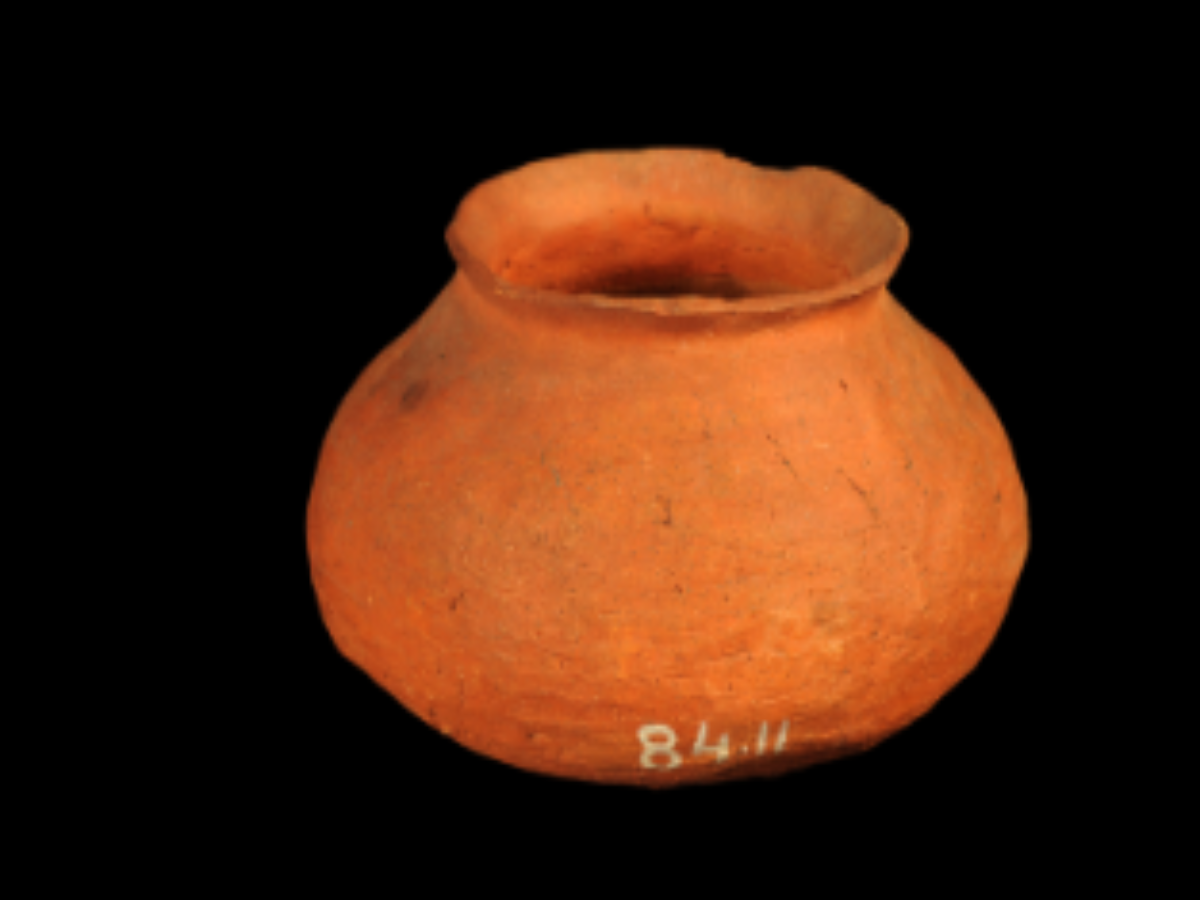State
Tribe Name
Art Type
short description
This most primary traditional earth brown pot of the Gadaba tribe in Odisha, which is a functional earthen utility article made from natural clay, sports a bulbous body, a short and narrow neck, and a rough outer surface-all of which give it rusticity signifying its handmade origin. The exterior is unpolished as is usual for terracotta wares of tribal artisans, where texture denotes a process of shape-making and firing without molds or wheels.
Thumbnail

Filter Postion
Right
Filter Background
Off
Theme
Filter Header Image

content
Image

description
This most primary traditional earth brown pot of the Gadaba tribe in Odisha, which is a functional earthen utility article made from natural clay, sports a bulbous body, a short and narrow neck, and a rough outer surface-all of which give it rusticity signifying its handmade origin. The exterior is unpolished as is usual for terracotta wares of tribal artisans, where texture denotes a process of shape-making and firing without molds or wheels.
Among Indian tribes from Eastern Ghats, the Gadaba tribe stands as among the most prominent. Such rich heritage of pot making and handicrafts involves women in making pots that are passed orally from a mother to a daughter-in-law. These pots are used as vessels to keep water, storing fermented drinks, or grains, and most times served as cooking vessels over open fires. The short neck and wide belly also have the benefit of being able to fill to heat easily without inconvenience.
These are claypot made with the clay present at the site and burnt in a traditional open fire. Such pots symbolize sustainable living in its best manifestation. The rough texture favors humidity and temperature control, making them the best in hot, wet places. Apart from being used domestically, such earthenware items represent the Gadaba in terms of homeliness to nature, terrestrial tenacity, and cultural roots. More so from the taking over of the craft by industry, conservation and encouragement has to be given for the traditional crafts for cultural sustainability.
Among Indian tribes from Eastern Ghats, the Gadaba tribe stands as among the most prominent. Such rich heritage of pot making and handicrafts involves women in making pots that are passed orally from a mother to a daughter-in-law. These pots are used as vessels to keep water, storing fermented drinks, or grains, and most times served as cooking vessels over open fires. The short neck and wide belly also have the benefit of being able to fill to heat easily without inconvenience.
These are claypot made with the clay present at the site and burnt in a traditional open fire. Such pots symbolize sustainable living in its best manifestation. The rough texture favors humidity and temperature control, making them the best in hot, wet places. Apart from being used domestically, such earthenware items represent the Gadaba in terms of homeliness to nature, terrestrial tenacity, and cultural roots. More so from the taking over of the craft by industry, conservation and encouragement has to be given for the traditional crafts for cultural sustainability.
Image Mode
landscape
promoted
On
Verified
Off
